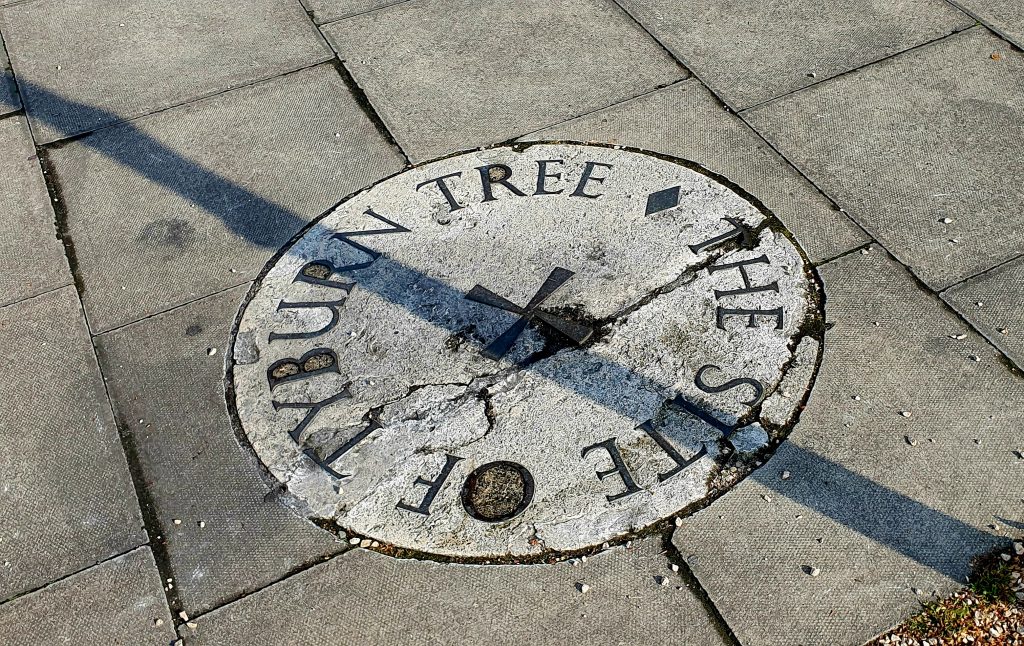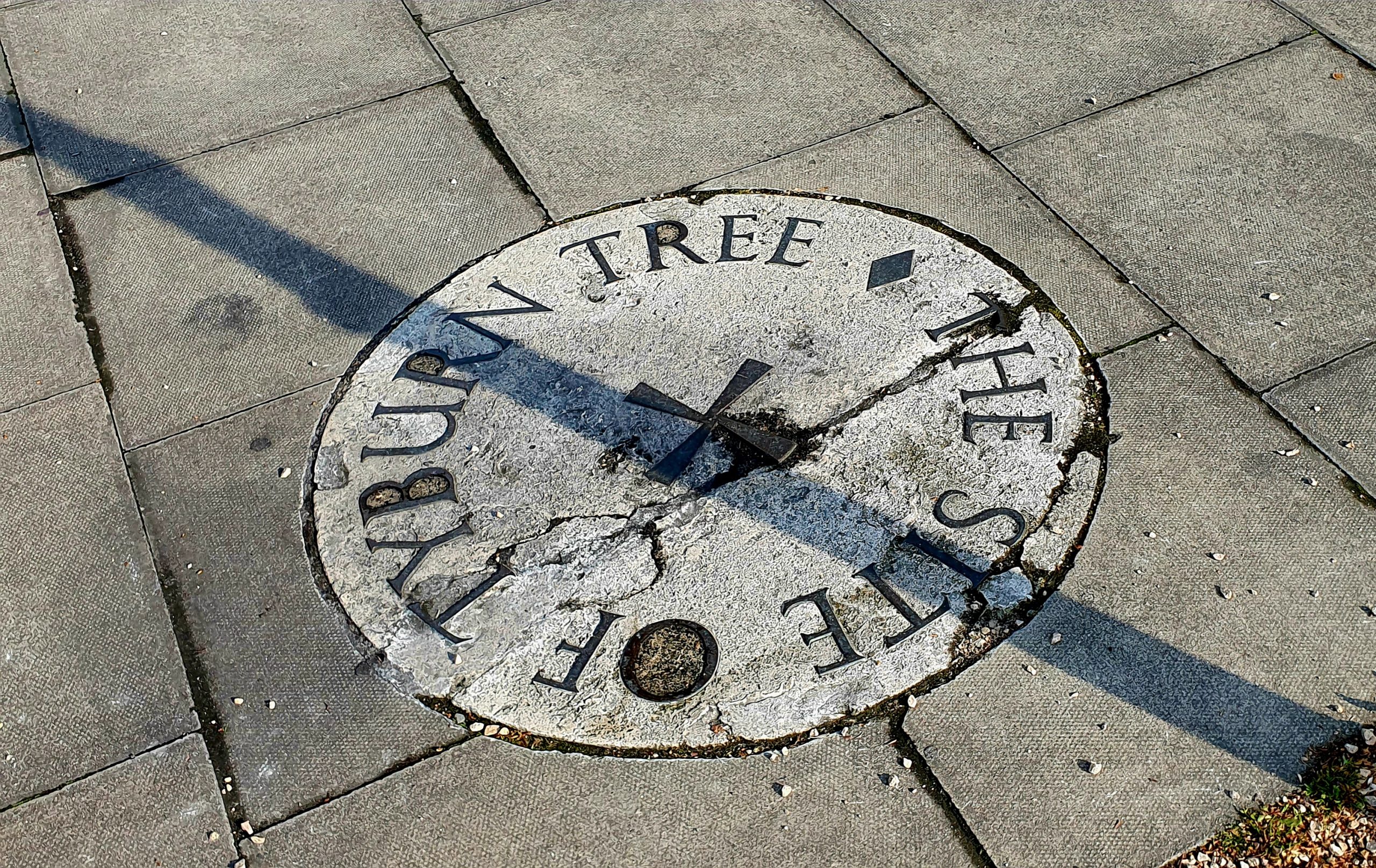
Public executions have been a part of London’s history for centuries, serving as a brutal form of punishment for criminals and a way of entertainment for the masses. Among the most relevant execution sites were Tyburn and Smithfield, where thousands of people die by hanging, burning, or other brutal methods of execution. These locations were not only a site of death but also a place where social and political dynamics played out. Today, as we seek to understand the past and preserve it for future generations, new technologies such as augmented reality (AR) can provide opportunities to explore and experience these historic sites in new ways. Article explores the history of public executions in London, with a particular focus on Tyburn and Smithfield, and examines how this history can inform the design of an AR experience for the Museum of London.
By Carina Steele www.carinasteele.com
Public executions have been a part of London’s history for centuries, serving as a brutal form of punishment for criminals and a way of entertainment for the masses. Among the most relevant execution sites were Tyburn and Smithfield, where thousands of people died by hanging, burning, or other brutal methods of execution. These locations were not only a site of death but also a place where social and political dynamics played out. Today, as we seek to understand the past and preserve it for future generations, new technologies such as augmented reality (AR) can provide opportunities to explore and experience these historic sites in new ways. The article explores the history of public executions in London, with a particular focus on Tyburn and Smithfield, and examines how this history can inform the design of an AR experience for the Museum of London.
This research project was inspired in great part by the Museum of London Exhibition that went from 14 October 2022 until 16 April 2023, which explored how public executions impacted the lives of Londoners through the 700 years that they were carried, as Beverley Cooks, curator of the exhibition puts it: ’Executions tells the story of the many thousands of Londoners that were condemned to a public death between 1196 and 1868. Public executions were an undeniable feature of London life for over 700 years and part of the experience of living in London at that time so, these visible manifestations and demonstrations of state power over the life and death of its citizens became fully embedded in London’s landscape, society and this is what we reveal in our exhibition’. (Museum of London, 2023, 0:01-0:39)
The history of public executions in London is long and complex, it goes through several centuries, the first recorded execution was at Tyburn in 1196 and they continued throughout all of London until 1868. They had a significant influence on the city’s history and society as an important element of its culture and economy. Executions were used as a form of punishment for serious crimes like murder but also for minor offences like theft. Public executions were considered a spectacle. They were frequently conducted in well-known public areas like Smithfield, Tyburn, Execution Dock, Tower Hill, Kennington Common and other places throughout London. Large audiences could watch the executions at these locations because they were meant to be visible and accessible with the intention of serving their purpose example of the consequences of acting against the law of the time. ‘By the middle of the 18th century there were over 200 crimes that carried the death penalty, the result of this overloading of the capital code meant that London became known as the bloodiest city of Europe, a city of gallows where more people were executed than anywhere else’. (Beverley Cook, Museum of London, 2023, 0:40-0:59)
Executions became an opportunity for social interaction, entertainment, and even business as vendors would offer the audience food and drinks among other things. they were also ceremonial events that often were accompanied of religious rituals, processions, and the usage of emblematic artefacts such as gallows, gibbets, and other execution tools and, also some emblematic characters like the hangman and the chaplain. All those elements were part of the experience of witnessing a public execution in London. As society’s values and norms started to change, people started to question this form of punishment and began to call for more compassioned punishments until it was abolished in the middle of the 19th century.
The Museum of London mapped the execution landscaped to give an idea of the magnitude and scale of these events in the everyday life of Londoners at that time. As they describe in their web article City of Gallows: mapping London’s execution landscape: within central London you are never further than 5 kilometres from a known site of execution. In the City of London’s Square Mile, you are always within 500 metres of a place where the gallows once stood! (Museum of London, 2022).
Tyburn
One of the principal gallows in London was The Tyburn Tree, it was located near what is today Marble Arch. At the time it was a Middlesex village called Tyburn. Was there where the first recorded execution took place in 1196 but it wasn’t until 1571 that the infamous Tyburn Tree was erected.
Executions at Tyburn Tree were public events that attracted large crowds who gathered to witness the spectacle. The condemned would often make speeches or perform before their execution. It is said that this was the origin of the emblematic Speakes Corner. ‘Speakers’ Corner evolved from these speeches which attempted to explain, justify and or to simply give meaning to a life or lives. And so Tyburn developed into a political arena for public debate and discussion. That remains, the defining principles of Speakers’ Corner rooted within the culture that was the Tyburn Hanging Tree’. (Historic-uk.com)
Over the years, several famous executions took place at Tyburn Tree. Among the notorious individuals executed was Jack Sheppard. John (Jack) Sheppard was a notorious thief and jailbreaker who became famous for his escapes. Sheppard was well-known for his audacity, but he was eventually caught and sentenced to death for his crimes, he was publicly hanged at Tyburn Tree. Sheppard’s story was immortalized in plays, books, and songs, making him one of the most infamous criminals of his time. The gallows were relocated to a new site near Newgate Prison in 1783, and Tyburn Tree was eventually dismantled in 1793. Today, the site is marked by a plaque surrounded by three small trees, on the traffic island at the junction of Edgware Road, Oxford Street, and Bayswater Road in London.
For an AR interactive experience about this Iconic site, the audience would be transported to the 18th century, where they would be standing in the midst of the hustle of the city, they would see the narrow streets and hear the sounds of horses and catch glimpses of people dressed in period clothing. They would be greeted by a virtual guide who would accompany them throughout this historical adventure and share stories and anecdotes about the history of Tyburn, its significance as an execution site, and the infamous criminals who died there. They would see the infamous Tyburn Tree, a large gallows structure, towering above them. The guide would provide detailed explanations about the construction of the Tyburn Tree, its purpose, and the different methods of execution that took place there, such as hanging, drawing, and quartering. They would witness a virtual re-enactment of some of the most notable executions that took place at Tyburn. As the condemned are brought to the gallows, they would hear their final words, and see the crowds that gathered to witness the spectacle.
Smithfield
Another of the most significant execution sites in London was Smithfield, located in the centre of the city, it has a long history as a market and a destination for public gatherings. It served as a location for fairs, competitions, and other public events in addition to being a busy market square, which made it an ideal place for public executions. Although it has undergone many changes and improvements over the years, its past as a location for public executions continues to be an important part of its history.
Many criminals, political prisoners, and religious dissenters were executed at Smithfield, including figures like William Wallace a Scottish nationalist and warrior, and leader of the Scottish rebellion against England, which was hanged, drawn, and quartered there. Wallace story is known to be the inspiration behind the movie Braveheart, starring and directed by Mel Gibson. Additionally, Smithfield was well-known for its connection to the religious persecution of Queen Mary I, who was known as “Bloody Mary” for her brutal suppression of Protestants. During her rule, many Protestants were executed at this site by being burned at the stake as part of her campaign to reinstate Catholicism as the official religion. While its days as an execution site are long past, the history of Smithfield serves as a reminder of the brutal realities of punishment in London’s past.
Today, Smithfield is known for its market, historic buildings, and cultural significance. It also is set to become the new home of The London Museum. The project of relocating the museum at the Smithfield Market has been approved and is expected to be finished by 2026 when it will reopen as The London Museum. The new venue will provide better transport links and a large space for galleries, events, performances and exhibitions. This presents a great promotional opportunity for the new museum that could take advantage of the history of the area and develop a cutting-edge Augmented Reality experience that takes the audience on a virtual journey through the dark and intriguing history of Smithfield, as one of London’s infamous execution sites.
For this experience the user would be transported to the streets of medieval London, where Smithfield comes to life before their eyes, standing at the place where countless executions took place, they would be immersed in the turbulent times of social and political intrigue that marked this period of history when public executions were carried. The audience could, for example, Witness the protestant martyrs, during the reign of Queen Mary I experiencing the religious intolerance of the time, as well as the human cost of religious persecution. Or maybe they would be able to witness the execution of William Wallace, the legendary Scottish patriot, as he bravely faces his fate at Smithfield.
We explored the history of public executions in London, with a particular focus on two of the most emblematic sites, Tyburn and Smithfield. This with the intention of informing possible narratives for augmented reality (AR) applications that could be used for the Museum of London as an educational, interactive tool that provides their audience with a look at such a significant part of the city’s history that had great social, cultural, and legal implications in the life and culture of Londoners. Today, the history and significance of public executions in London continue to be studied and remembered, exploring the complex and evolving relationship between law, society, and justice. Through an AR application, the Museum of London could reach new audiences and provide new ways of experiencing history and culture while shedding light on complicated subjects such as the harsh realities of crime and punishment. By immersing in the past, they can bring to life in an impactful way the stories of those who suffered and add new dimensions to our understanding of London’s rich and complex history.
Reference
Museum of London (2022) City of Gallows: mapping London’s execution landscape exhibition.











